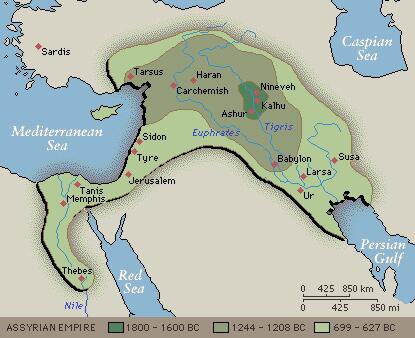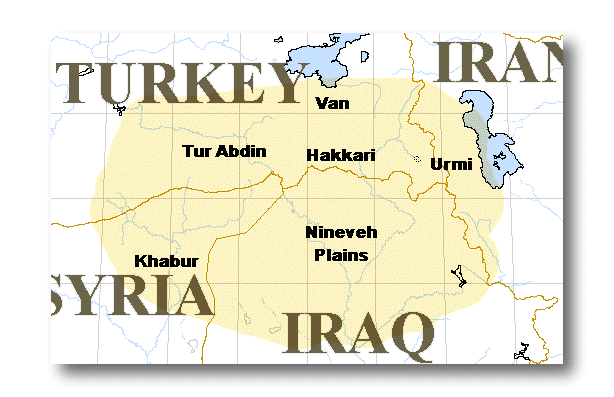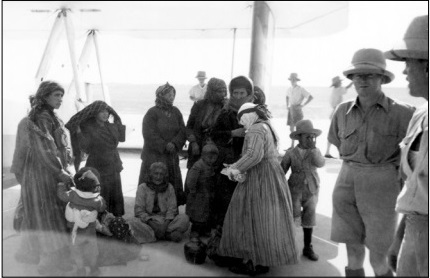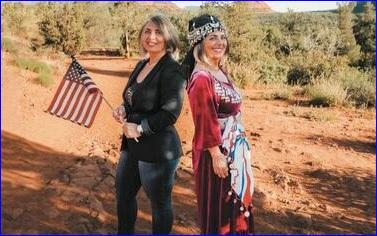By Namrood Shiba
 (AINA) -- The use of the "Christian" label for indigenous peoples in Iraq, particularly in northern Iraq, is not neutral. It carries political, legal, and historical consequences that undermine indigenous identity and collective rights. Religion Is not an indigenous Identity; "Christian" describes a religious belief, not a people, nation, or indigenous group.
(AINA) -- The use of the "Christian" label for indigenous peoples in Iraq, particularly in northern Iraq, is not neutral. It carries political, legal, and historical consequences that undermine indigenous identity and collective rights. Religion Is not an indigenous Identity; "Christian" describes a religious belief, not a people, nation, or indigenous group.
By Namrood Shiba
 (AINA) -- For 6775 years the Assyrians have been an indigenous population of Mesopotamia, with a continuous presence in what is today northern Iraq and the wider region. Our identity is not solely religious, nor is it a modern construct; it is rooted in a distinct history, language, culture, and collective memory that long predates contemporary political borders.
(AINA) -- For 6775 years the Assyrians have been an indigenous population of Mesopotamia, with a continuous presence in what is today northern Iraq and the wider region. Our identity is not solely religious, nor is it a modern construct; it is rooted in a distinct history, language, culture, and collective memory that long predates contemporary political borders.
By Namrood Shiba
(AINA) -- The Simmele Massacre of 1933 was not an abstract tragedy. It was a crime committed against the Assyrian people by the Iraqi army, with the participation of local Kurdish forces, resulting in the mass killing, displacement, and terrorization of an indigenous nation in its own homeland. Any commemoration of this atrocity must begin with an honest acknowledgment of responsibility.
By Namrood Shiba
 (AINA) -- The laying of a foundation stone for a memorial commemorating the Simmele Massacre by parties historically responsible for the massacre itself is not an act of reconciliation, it is an act of moral violence. It represents a deliberate attempt to appropriate Assyrian suffering while stripping it of truth, responsibility, and justice.
(AINA) -- The laying of a foundation stone for a memorial commemorating the Simmele Massacre by parties historically responsible for the massacre itself is not an act of reconciliation, it is an act of moral violence. It represents a deliberate attempt to appropriate Assyrian suffering while stripping it of truth, responsibility, and justice.
By Abdulmesih BarAbraham
 (AINA) -- Dr. Sophia Isaac is a scholar, educator, and cultural advocate whose own life reflects the very journey she studies. Born in Urmia, Iran, and brought to the United States as a child before the 1979 Iranian Revolution, she grew up navigating the space between two identities--Assyrian heritage and American life.
(AINA) -- Dr. Sophia Isaac is a scholar, educator, and cultural advocate whose own life reflects the very journey she studies. Born in Urmia, Iran, and brought to the United States as a child before the 1979 Iranian Revolution, she grew up navigating the space between two identities--Assyrian heritage and American life.
By Professor John Kaninya
 (AINA) -- In contemporary political discourse, the rights of indigenous peoples are too often reduced to numbers--population size, electoral weight, or demographic dominance. For the Assyrian people, this reduction is not only unjust; it is historically illiterate.
(AINA) -- In contemporary political discourse, the rights of indigenous peoples are too often reduced to numbers--population size, electoral weight, or demographic dominance. For the Assyrian people, this reduction is not only unjust; it is historically illiterate.
 (AINA) -- The use of the "Christian" label for indigenous peoples in Iraq, particularly in northern Iraq, is not neutral. It carries political, legal, and historical consequences that undermine indigenous identity and collective rights. Religion Is not an indigenous Identity; "Christian" describes a religious belief, not a people, nation, or indigenous group.
(AINA) -- The use of the "Christian" label for indigenous peoples in Iraq, particularly in northern Iraq, is not neutral. It carries political, legal, and historical consequences that undermine indigenous identity and collective rights. Religion Is not an indigenous Identity; "Christian" describes a religious belief, not a people, nation, or indigenous group.
 (AINA) -- For 6775 years the Assyrians have been an indigenous population of Mesopotamia, with a continuous presence in what is today northern Iraq and the wider region. Our identity is not solely religious, nor is it a modern construct; it is rooted in a distinct history, language, culture, and collective memory that long predates contemporary political borders.
(AINA) -- For 6775 years the Assyrians have been an indigenous population of Mesopotamia, with a continuous presence in what is today northern Iraq and the wider region. Our identity is not solely religious, nor is it a modern construct; it is rooted in a distinct history, language, culture, and collective memory that long predates contemporary political borders. (AINA) -- The laying of a foundation stone for a memorial commemorating the Simmele Massacre by parties historically responsible for the massacre itself is not an act of reconciliation, it is an act of moral violence. It represents a deliberate attempt to appropriate Assyrian suffering while stripping it of truth, responsibility, and justice.
(AINA) -- The laying of a foundation stone for a memorial commemorating the Simmele Massacre by parties historically responsible for the massacre itself is not an act of reconciliation, it is an act of moral violence. It represents a deliberate attempt to appropriate Assyrian suffering while stripping it of truth, responsibility, and justice. (AINA) -- Dr. Sophia Isaac is a scholar, educator, and cultural advocate whose own life reflects the very journey she studies. Born in Urmia, Iran, and brought to the United States as a child before the 1979 Iranian Revolution, she grew up navigating the space between two identities--Assyrian heritage and American life.
(AINA) -- Dr. Sophia Isaac is a scholar, educator, and cultural advocate whose own life reflects the very journey she studies. Born in Urmia, Iran, and brought to the United States as a child before the 1979 Iranian Revolution, she grew up navigating the space between two identities--Assyrian heritage and American life.